Loving Literacy-Let’s Read and Write Storybooks
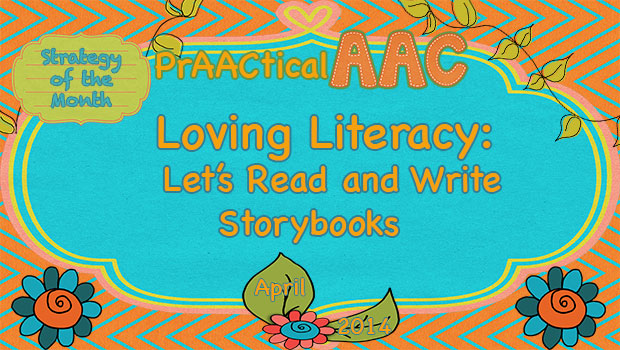
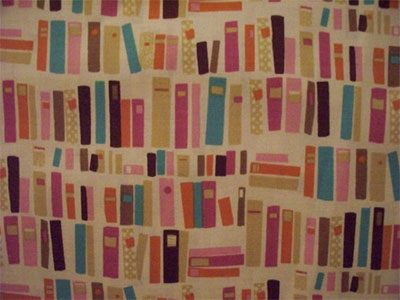 Literacy instruction involves lots of reading and writing. Last week, Carole discussed using storybook reading and the RAAP (Read, Ask, Answer, Prompt) strategy by Drs. Cathy Binger and Jennifer Kent-Walsh to teach communication and literacy. To use storybooks with all learners we need to have lots of books that are easily accessible. Books need to be accessible physically as well as through content and interest. It is lucky that with all of today’s on-line resources there is an abundance of ways to obtain as well as make and write storybooks. All learners can and should be be involved in both the reading and writing process. Not only do literacy skills improve but so do communication skills.
Literacy instruction involves lots of reading and writing. Last week, Carole discussed using storybook reading and the RAAP (Read, Ask, Answer, Prompt) strategy by Drs. Cathy Binger and Jennifer Kent-Walsh to teach communication and literacy. To use storybooks with all learners we need to have lots of books that are easily accessible. Books need to be accessible physically as well as through content and interest. It is lucky that with all of today’s on-line resources there is an abundance of ways to obtain as well as make and write storybooks. All learners can and should be be involved in both the reading and writing process. Not only do literacy skills improve but so do communication skills.
Involving Learners in the Storybook Process
- Reader & Writer Vocabulary- Facilitate involvement by using reader and writer vocabulary. Refer to learners as “readers”, “authors”, “editors”, “publishers”, “critics”, etc. When you are treated and referred to as part of the process, you become more involved in the literary experience.

- Choice Making- Offer learners many different choices depending upon goals and individualized situations. When reading, choices can be offered related to books, pointers, seating, turning pages, book genres, authors, etc. When writing, all learners can choose story themes, characters, conflicts, scenery, or any part of the story. Make choice making visual through pictures, symbols, or written text depending on learner level.
- Rating Scales– Both the reading and writing process can be enhanced by rating various aspects of the literacy experience. When reading, books can be rated in terms of ‘liking it or not so much’, from ‘scary to funny’, by difficulty level, etc. When writing books, ratings can also be made in terms of difficulty in making decisions, types of characters, types of settings, and so much more.
- Graphic Organizers- Graphic organizers are a visual display that helps organize information. For reading and writing, they help demonstrate relationships between concepts or ideas. They help organize how to put information together for writing. By using graphic organizers, all learners can participate in the process of relating information and building a story.
- Visual Support Organizers– Use a variety of no-tech and low tech visual supports and strategies to organize and draw attention to important text and meaning. Things like Post It notes, dots, arrows, etc, high lighters for color coding, stamps, and labels are a few ideas.
Check out these awesome resources for making your own adapted books and for printing out already created adapted books and lessons.
Tar Heel Reader– Adapted books searchable by a wide range of topics and also a resource for writing books. Just read the books first as these adapted books are for ALL ages
Route 66– an online instructional reading and writing literacy program for adolescent and adult beginning readers by Karen Erickson
Power Point Books– Ideas for talking PowerPoint Books from Glenda’s Assistive Technology Blog
Printable Adapted Books Collection and More by Ruth Morgan at Chapel Hill Snippets– Wonderful collection of adapted books
Paul V. Sherlock Center on Disabilities- Adapted Literature – Resource for adapted chapter books, lessons, and more
New York City Department of Education: Adapted Books– Great collection of adapted books
Baltimore City Schools- Book Specific Communication Boards– Communication boards to go with adapted books
Dade County Public Schools ESE- Interactive Storybooks– Awesome collection of adapted books
SETT BC- Accessible Books– Great collection of adapted books
SLP Corner- Adapted Books by Peg Hutsonp Nechkash at Pedia Staff– Thoughts and resources on adapted books
Adapted Books- Autism Helper– Collection of adapted books and lessons
Accessible & Adapted Books- LiveBinders– Resources on adapted books and writing
Adapted Books Room Eighty Three on Pinterest– Nice curated resources for adapted books
Adapted Books and Related Materials by Special Education Service Agency– Resource for adapted books and related materials
A-Z of Adapting Books for Students with Disabilities in Virginia
5 Ways to Make Page Fluffers & Spacers– Accessibility for turning pages
Adaptive Book Fun– Thoughts on adapted books
Filed under: Strategy of the Month
Tagged With: adapted books, literacy, resources, writing
This post was written by Robin Parker

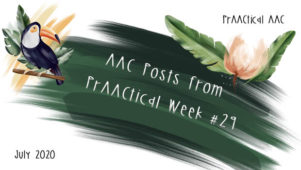
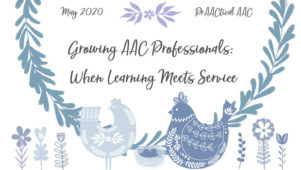
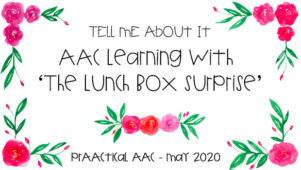
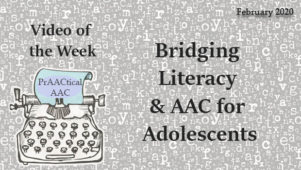
2 Comments
StoryJumper is a great free website that you can have students create books on and publish them. Also, there is a great app called Bookreader where you can create interactive books that have video and sound.
Thanks, Elizabeth!! I will check them out. 🙂